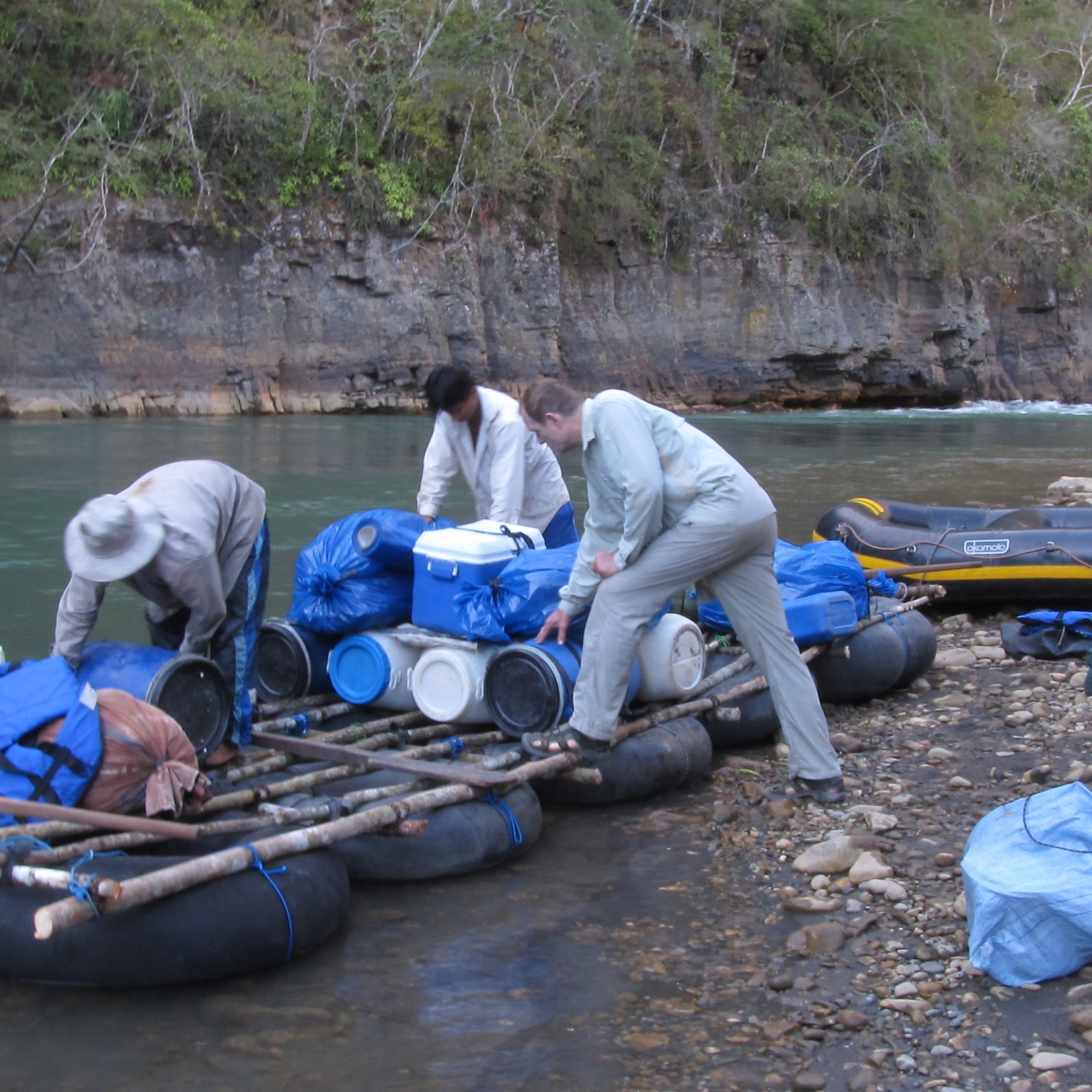Bolivian Adventure
Rolfe Oostra | 1st August 2012
expedition reports
I counted 17 years since I was last in Bolivia when I stepped onto the tarmac, yet it
seemed immediately familiar. All those years ago I arrived carrying ice axes and
crampons but now I’m on a different mission – this time I have a mosquito net and a
machete.
Jeff, an old mate, is waiting at the airport. He hasn’t changed much since the time we
were living the climbing scene here all those years ago. The only distinction that sets him
apart from then is that now he is officially a Bolivian rather than the Aussie he used to be.
While my clients head down the notoriously famous biking track “the death road” I
headed out with Jeff to get the final preparations for this three week Amazon venture
sorted. “A real mission, mate!” he promises as we push our trolleys piled high through
the supermarket and of course like always I will learn that he is “dead right, mate”.
The trend for following guidebooks has travellers visiting Bolivia neatly confined to a
few must-do destinations. The lack of scope in these books has naturally produced the
sacrificial lambs where a watered down experience can be found, but jump left or right of
the gringo trail and you will soon learn that what you read in the accounts of the early
explorers is still out there, totally unchanged, waiting for you to experience it in all it’s
terrible form.
Think the “Death Road” mountain bike descentwas hairy? Try your luck climbing the
single tracks of the Cordillera Apolobamba aboard a top-heavy Nissan Patrol with Carlos
the driver sweating and bug-eyed with fear behind the wheel.
Think Rurrenabaque is the jungle? Try descending into the remote Madidi National Park
following rarely seen, 600 year old Inca trails, all the while knowing that only a dozen or
so kilometres away three different tribes all still roam the forest as they always have
hunting and gathering.
I had done a few missions to this neck of the woods before and was thrilled that these
ventures are still very much off the “gringo trail”.
The Altiplano beyond the creaking mass of El Alto is still inhabited by the creatures of
the airport poster and even the total looks of bewilderment at the sight of two groaning
four wheel drives passing by are undoubtedly the same as those received by the
Conquistadors on horseback. Ladies wearing bowler hats are still holding llama’s, sitting
beside farm stalls and huddled together gossiping. Ruddy faced men, short but stocky and
powerful are still stuffing their cheeks with coca leaves and eking out an existence in this
tough country with unimaginable persistence and ingenuity.
Bespoke is what it says on the tin though: Clients want jungle with no gringo influence
then we can provide it. The request to lead a raw jungle expedition had stirred my old
memories of the Bolivian Amazonas and so the opportunity to return involved little
hesitation.
Initially we came inspired by the accounts of Col. Percy Fawcett of the 1910’s and today
he would find nothing much different; Our team of mules and muleteers creaking under
the strain, left the remote ramshackle village perched on the edge of the great wilderness,
at sunrise. A foot journey of seven days lay ahead; a high Andean pass and mile long
traverses over barren ridges rising high above the dark forest, then steeply descending
deep into the vegetation tunnels and the kingdom of the unimaginable. Often we hacked
our way into and out of steep ravines knowing that every step we took brought us that
one step further from everything we find comfortable and safe.
The local guides we took on our expedition didn’t speak our combined languages of
English and Australian but made themselves noticed by being embarrassingly handy and
practical the entire time. Fire magically came from the rain drenched moss, bamboo lean
to’s popped up in the most inhabitable places that then quickly became home for the
night and thirst quenching water was found deep in the bogs. These guys certainly know
how to live side by side with the jungle.
Camps were at unexpected clearings in the forest, relief came from the dissipating clouds
as the afternoon rains finally dried up and the cool moist air fell back down into the deep
valley below. Stars emerging to the nocturnal howls of monkeys and the crescendo of the
jungle beat, spirits revived with a hot fire, barbecued steak and a glass of wine. Yep,
Percy would have recognised it well.
Finally we reached the Tuichi. It was again here that I was reminded how incredibly at
home these guides really are in this network of vines trees valley and rivers. You need a
cool head whilst plunging down grade four rapids on a rubber tyre raft held together with
ropes and branches, and a cool head is exactly what they had – along with a hand-carved
wooden oar, beaming smiles and endless banter.
The 5 day raft descent down the San Pedro canyon on the Tuichi River, was made
famous by Yossi Ginsberg “Lost in the Jungle”. His account of a near-tragedy on this
river literally comes alive as you hurl over the same rapids he survived and plunge down
the one he nearly didn’t. The Colonel would have loved it. As for our clients, the journey
was as tough as they’d expected, if not tougher. And the stories get better with every time
that they are re told. After three weeks in Bolivia its good to be home but one thing is for
sure I want to go back.
If you too want a bespoke venture, get in touch. Alternatively jump on an expedition
that’s already running and enjoy where it takes you.
The End.


Comment (0)